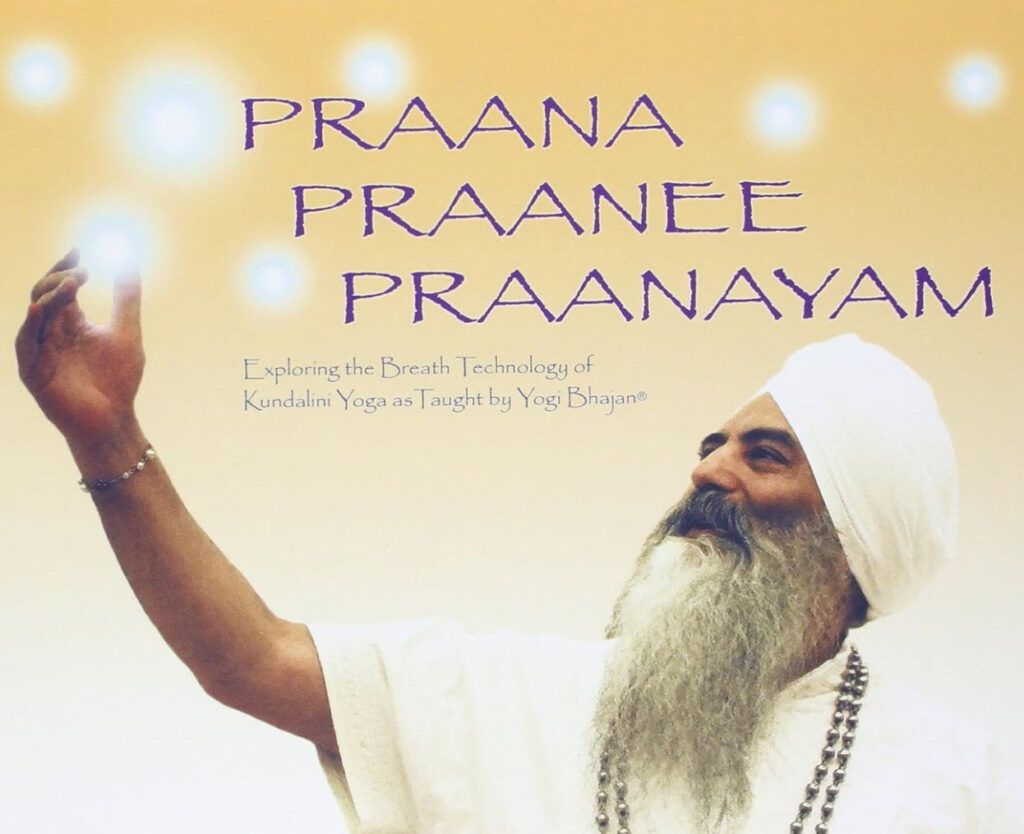Pranayama: The Power of the Breath
Pranayama is breath work. Prana means life force, ayama means to extend or expand. When we use various pranayama practices, we are expanding and increasing our prana, the vital life force that energizes the mind, body, and consciousness, through the power of the breath. Pranayama practices are part and parcel of Kundalini Yoga practice.
Along with oxygen, nitrogen, and carbon dioxide, the breath contains prana. We are regularly taught we can’t live without oxygen; it is also true that we can’t live without prana.
The Breath / Mind Connection
The first and last thing we do in this physical lifetime is breathe. Our breath gives us life when we are born and ends our life when we die.
Breath is life-giving, and like the heart pumping, it never stops throughout our lives. Just like the heart, breathing happens naturally and automatically, yet unlike the heartbeat, we can change the rate of our breathing at any given moment.
The average rate of breathing for most people is about sixteen times per minute. Slowing down the breath directly affects the mind: when we become aware of the breath and take deep, slow inhales and exhales, our mind begins to slow down. This helps ease anxiety, worry, and stress, and brings us into the present moment.
When the rate of breathing increases, or if it becomes rapid and irregular, the mind becomes disturbed and erratic.
By breathing slowly and steadily, the mind will become calm. As we change our rate of breathing, we change our state of mind. Of all the positive changes a person can make, learning to breathe deeply and completely is probably the most effective tool for developing higher consciousness and increasing health, vitality, and connectedness in one’s life.
Principles to Remember:
- Your rate of breathing and your state of mind are inseparable.
- The slower your rate of breathing, the more control you have over your mind.
- The mind follows the breath, and the body follows the mind.
Breath Frequency
8 Breaths per Minute:
- Feel more relaxed
- Relief from stress and increased mental awareness
- The parasympathetic nervous system begins to be influenced
- Elevates healing processes
4 Breaths per Minute:
- Positive shifts in mental function
- Intense feelings of awareness, increased visual clarity, and heightened body sensitivity
- Pituitary and pineal glands begin to coordinate at an enhanced level, producing a meditative state
1 Breath per Minute:
- Optimized cooperation between brain hemispheres
- Dramatic calming of anxiety, fear, and worry
- Openness to feeling one’s presence and the presence of Spirit
- Develops intuition
©The Teachings of Yogi Bhajan
Yogi Bhajan Quotes on Prana and Pranayam
Prana is the power of God which comes through you with the air. ~ August 31, 1982
Any breath you take automatically, you waste your prana. Every breath you take consciously, you enhance your prana, and that enhances your vitality. ~November 6, 1991
Use the breath of life for your own advantage. Without breath of life—prana—you cannot live. Why not use the same basic element energy for strength and power? If you breathe 21 – 24 breaths a minute, you can be so weak. You can’t carry your weight. If you breathe three breaths a minute, you can be so strong, nobody can face you. ~November 28,1992
Breath of life is a privilege. When consciously you breathe, it gives you prosperity, it gives you projection, it gives you personality, because it adds to your aura and you expand. That’s why we call it pranayam. And one of the longest breaths is breath of fire. As long as you can breathe continuously it is one breath. If you breathe for one hour, it’s one breath. So, with breath of fire not only do you expand your aura, your personality, and your power of projection, you also expand your life. ~ August 31, 1982
Get friendly with your support system—the breath of life—your life system, your energy, your power, your grit. It is you in you. Introduce and shake hands with it; feel it, touch it, be it. ~November 18, 1988
That’s how yogis extend their life—by practicing one breath a minute. When you practice one breath a minute, then you become Pavan Guru—you become the light and knowledge of the prana, and then you know the Universe, the Universe knows you. ~July 26, 1996
To explore more on the breath technology of Kundalini Yoga as taught by Yogi Bhajan, check out the book Praana Praanee Pranayam.


Meditation for a Calm Heart - 3HO International
[…] soothing breath practice (pranayama) relieves anxiety and promotes calmness and mental clarity. It’s a great opportunity to bring […]